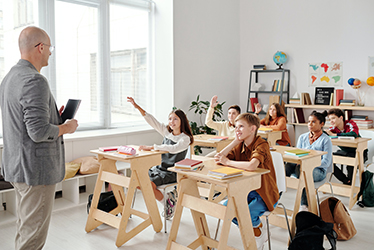From Virtual to In-Person

The 2020-2021 school year was certainly one for the books! Children, caregivers, and school workers were each met with an entirely new transition into virtual learning. Teachers navigated the world of virtual lesson planning, caregivers rearranged schedules to facilitate their child’s learning, and children adapted to learning through a computer screen.
With the 2021-2022 school year reintroducing in-person learning for many, another transition period is expected. This transition period may be filled with a mixture of emotions for children, caregivers, and school workers. Below are some tips to ease this transition process for your child:
- Preparation is Key! – Knowing what to expect when returning to school can assist in decreasing children’s nerves. Discussing social distancing, masks, and expectations within the school setting will help decrease the initial shock of the first day of school. Social stories are an excellent strategy to educate and prepare children for the upcoming school year. Please, reach out to your child’s therapist if you would like them to create a detailed and personalized social story for your child.
- The Little Things – When we are met with change in our lives, familiarity can bring comfort. Allow your child to take their favorite comfort item to school. Pack their favorite lunch. Buy those awesome colored pencils that they just had to have. The little things really can provide comfort with the big things!
- Open Communication – Keeping an open line of communication regarding the school transition process can help with understanding your child’s current feelings. Asking your child questions such as “what are you looking forward to when returning to school” or “what are you worried about most when going back to school?”, provides opportunities to problem solve strategies to assist with the transition.
- Signs to Watch For – Being alert to changes in a child’s demeanor can assist in clarifying current feelings regarding this new transition. Be aware of signs such as increased irritability, changes in activity level, and decreased social participation. If these signs are present, further investigate to discover if the signs are correlated with the in-person school transition.
- Model Model Model – Modeling is a great strategy for teaching children valuable skills. By practicing calming strategies, such as deep breathing, with and/or around your child, you are facilitating a calm state for you and your child.
Although the transition from virtual learning to in-person learning may present challenges for children, caregivers, and school workers, it is important to realize that many are in this together and seeking support can help ease the transition. Happy school year!!

Eyas Landing is a therapy clinic with a mission to provide evidence-based and family-centered therapy services for children, adolescents, and their families. The primary goal is to deliver relationship-based interventions within the most natural environments and to empower families to reach their full potential. To achieve this goal, our highly educated, compassionate staff dedicates time and expertise to create experiences that maximize therapeutic outcomes. The strength, determination, and perseverance of our clients are evident as they succeed in therapy, and ultimately in their daily lives.
Eyas Landing offers a wide range of comprehensive services including Speech Therapy, Occupational Therapy, Physical Therapy, ABA Therapy, Social Work, Family Therapy, and Neuropsych testing. Services are provided throughout the Chicagoland area via Telehealth, In-Home, and in our state of the art clinic.
Want to learn more or you have a specific question? Feel free to connect with us here!


